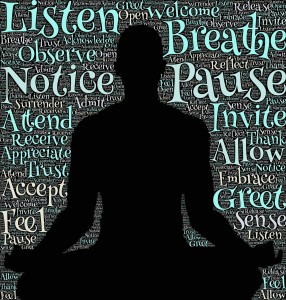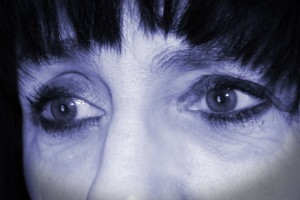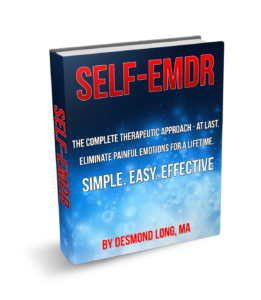Eye movement desensitization and reprocessing (EMDR) is a form of psychotherapy developed by Francine Shapiro in the 1990s in which the person being treated is asked to recall distressing images; the therapist then directs the client in one type of bilateral sensory input, such as side-to-side eye movements or hand tapping. It is included in several evidence-based guidelines for the treatment of post-traumatic stress disorder (PTSD).
It has been controversial; critics have argued that the eye movements in EMDR do not add to its effectiveness and lack a falsifiable theory. While multiple meta-analyses have found it to be just as effective as trauma focused cognitive behavioral therapy for the treatment of PTSD, these findings are tentative given the low numbers in the studies, high risk rates of researcher bias and high dropout rates.
The person being treated is asked to recall distressing images while generating one of several types of bilateral sensory input, such as side-to-side eye movements or hand tapping. The 2013 World Health Organization practice guideline says that “Like cognitive behavioral therapy (CBT) with a trauma focus, EMDR aims to reduce subjective distress and strengthen adaptive beliefs related to the traumatic event. Unlike CBT with a trauma focus, EMDR does not involve (a) detailed descriptions of the event, (b) direct challenging of beliefs, (c) extended exposure, or (d) homework.”
A 1998 meta-analysis found that EMDR was as effective as exposure therapy and SSRIs.
A 2002 meta-analysis concluded that EMDR is not as effective, or as long lasting, as traditional exposure therapy.
A 2005 and a 2006 meta-analysis each suggested that traditional exposure therapy and EMDR have equivalent effects immediately after treatment and at follow-up.
Two meta-analyses in 2006 found EMDR to be at least equivalent in effect size to specific exposure therapies.
A 2009 review of rape treatment outcomes concluded that EMDR had some efficacy. Another 2009 review concluded EMDR to be of similar efficacy to other exposure therapies and more effective than SSRIs, problem-centered therapy, or “treatment as usual”.
A 2010 meta-analysis concluded that all “bona fide” treatments were equally effective, but there was some debate regarding the study’s selection of which treatments were “bona fide”.
A Cochrane systematic review comparing EMDR with other psychotherapies in the treatment of Chronic PTSD, found EMDR to be just as effective as Trauma-Focused Cognitive Behavior Therapy (TFCBT) and more effective than the other non-TFCBT psychotherapies. Caution was urged interpreting the results due to low numbers in included studies, risk of researcher bias, high drop out rates, and overall “very low” quality of evidence for the comparisons with other psychotherapies.
Another systematic review examined 15 clinical trials of EMDR with and without the eye movements, finding that the effect size was larger when eye movements were used. Again, interpretation of this meta-analysis was tentative. Lee and Cuijpers (2013) stated that “the quality of included studies was not optimal. This may have distorted the outcomes of the studies and our meta-analysis. Apart from ensuring adequate checks on treatment quality, there were other serious methodological problems with the studies in the therapy context.”
The 2009 International Society for Traumatic Stress Studies practice guidelines categorized EMDR as an evidence-based level A treatment for PTSD in adults. Other guidelines recommending EMDR therapy – as well as CBT and exposure therapy – for treating trauma have included NICE starting in 2005, Australian Centre for Posttraumatic Mental Health in 2007, the Dutch National Steering Committee Guidelines Mental Health and Care in 2003, the American Psychiatric Association in 2004, the Departments of Veterans Affairs and Defense in 2010, SAMHSA in 2011, the International Society for Traumatic Stress Studies in 2009, and the World Health Organization in 2013.
EMDR is included in a 2009 practice guideline for helping children who have experienced trauma. EMDR is often cited as a component in the treatment of complex post-traumatic stress disorder.
A 2017 meta-analysis of randomized controlled trials in children and adolescents with PTSD found that EMDR was at least as efficacious as cognitive behavior therapy (CBT), and superior to waitlist or placebo.
The proposed mechanisms that underlie eye movements in EMDR therapy are still under investigation and there is as yet no definitive finding. The consensus regarding the underlying biological mechanisms involve the two that have received the most attention and research support: (1) taxing working memory and (2) orienting response/REM sleep.
There have been a number of proposed mechanisms including the Adaptive Information Processing (AIP) model.[unreliable medical source] In addition, brain waves during EMDR treatment shows changes in brain activity, specifically the limbic system showed its highest level of activity prior to commencing EMDR treatment.[unreliable medical source] A slowing of brain waves during the bilateral stimulation (eye movement) is somewhat similar to what occurs during sleep.[unreliable medical source]
According to the 2013 World Health Organization practice guideline: “This therapy [EMDR] is based on the idea that negative thoughts, feelings and behaviours are the result of unprocessed memories. The treatment involves standardized procedures that include focusing simultaneously on (a) spontaneous associations of traumatic images, thoughts, emotions and bodily sensations and (b) bilateral stimulation that is most commonly in the form of repeated eye movements.”
Salkovskis in 2002 reported that the eye movement is irrelevant, and that the effectiveness of EMDR was solely due to its having properties similar to CBT, such as desensitization and exposure.
EMDR therapy was first developed by Francine Shapiro upon noticing that certain eye movements reduced the intensity of disturbing thought. She then conducted a scientific study with trauma victims in 1988 and the research was published in the Journal of Traumatic Stress in 1989. Her hypothesis was that when a traumatic or distressing experience occurs, it may overwhelm normal coping mechanisms, with the memory and associated stimuli being inadequately processed and stored in an isolated memory network.
Shapiro noted that, when she was experiencing a disturbing thought, her eyes were involuntarily moving rapidly. She noticed further that, when she brought her eye movements under voluntary control while thinking a traumatic thought, anxiety was reduced. Shapiro developed EMDR therapy for post-traumatic stress disorder. She speculated that traumatic events “upset the excitatory/inhibitory balance in the brain, causing a pathological change in the neural elements”.
As early as 1999, EMDR was controversial within the psychological community, and Shapiro was criticized for repeatedly increasing the length and expense of training and certification, allegedly in response to the results of controlled trials that cast doubt on EMDR’s efficacy. This included requiring the completion of an EMDR training program in order to be qualified to administer EMDR properly, after researchers using the initial written instructions found no difference between no-eye-movement control groups and EMDR-as-written experimental groups. Further changes in training requirements and/or the definition of EMDR included requiring level II training when researchers with level I training still found no difference between eye-movement experimental groups and no-eye-movement controls and deeming “alternate forms of bilateral stimulation” (such as finger-tapping) as variants of EMDR by the time a study found no difference between EMDR and a finger-tapping control group. Such changes in definition and training for EMDR have been described as “ad hoc moves [made] when confronted by embarrassing data”.
A 2000 review argued that the eye movements did not play a central role, that the mechanisms of eye movements were speculative, and that the theory leading to the practice was not falsifiable and therefore not amenable to scientific inquiry. It went on to refer to EMDR as “pseudoscience”, citing non-falsifiability as one of several hallmarks of pseudoscience that EMDR met. As discussed in 2013 by Richard McNally, one of the earliest and foremost critics: “Shapiro’s (1995) Eye Movement Desensitization and Reprocessing (EMDR) provoked lively debate when it first appeared on the scene in the late 1980s…. Skeptics questioned whether the defining ingredient, bilateral eye movement, possessed any therapeutic efficacy beyond the imaginal exposure component of EMDR…. A 2001 meta-analysis suggested that EMDR with the eye movements was no more efficacious than EMDR without the eye movements (Davidson & Parker, 2001), implying that “what is effective in EMDR is not new, and what is new is not effective” (McNally, 1999, p. 619).
Although controlled research has concentrated on the application of EMDR to PTSD, a number of studies have investigated EMDR therapy’s efficacy with other disorders, such as borderline personality disorder, and somatic disorders such as phantom limb pain.








